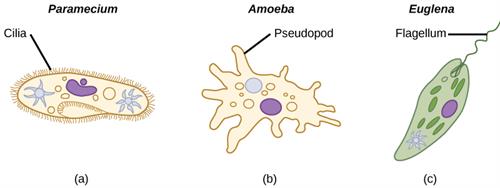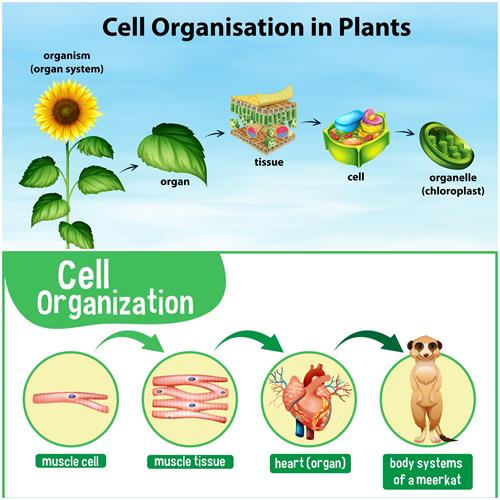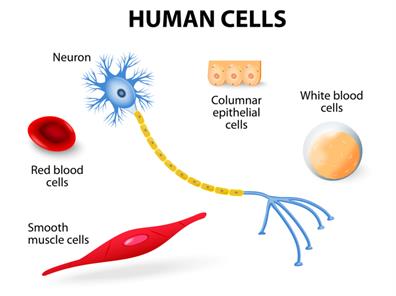PDF chapter test TRY NOW
Number of cells:
The number of cells in living organisms varies from organism to organism. The human body has trillions of cells that vary in shape and size.
The living organisms are classified into two different categories based on the number of cells.
Unicellular organisms:
The living organisms which are made up of only one cell are known as unicellular organisms. These organisms are generally microscopic and hence can be seen only under a microscope. The single-cell found in these organisms performs all the necessary functions required for the survival of the organisms.

Unicellular organisms: a. Paramecium; b. Amoeba; c. Euglena
Multicellular organisms:
The organisms that are made up of more than one cell are known as multicellular organisms. These types of organisms are in general macroscopic in size and can hence be seen with the naked eye. The living organisms that comprise a billion cells begin their life as a single cell which is the fertilized egg.
Example:
Spirogyra, mangoes, onions, and human beings are some of the examples.
Important!
The approximate number of cells in the human body is \(3.7 X10^{13}\) or \(37,000,000,000,000\). Even though the number of cells may vary between two different organisms, it will not affect the functioning of the living organisms.
In multicellular organisms, the cells are organized into tissues, organs, and organ systems. The body of these macroscopic organisms involves various functions.
Formation of organisms from cells:
Many cells perform the same function together to form tissues. These different tissues combine to form an organ, and the various organs include an organ system that finally forms an organism.

Organisation of life - From cell to organism
Cell:
It is the basic structural and functional unit of life. The cell is the building unit of all organisms.
Several types of cells work together to perform various functions. Hence a cell is known as the unit of life.
In multicellular organisms like humans, different cells are of different shapes.

Types of human cells
- The muscle cells of humans are examples of spindle-shaped cells.
- The skins cells are examples of flat cells.
- The nerve cells or neurons are long and branched cells which help in controlling and coordinating the different parts of the body.
Tissues:
The group of cells that are organized for a specific function are known as tissues. These structures have the same shaped or different shaped cells that perform a common function. Humans and other animals are made up of various tissues such as nervous, epithelial, connective, and muscle tissues. Plants comprise transport, protective, and ground tissues.
Organ:
The collection of different tissues that work together to perform a specific function or functions is an organ. The human body comprises other organs such as the stomach, eye, heart, lungs, kidneys , etc., that are made up of different tissues. The plants have various organs such as leaves, stems, and roots.
All the organs together form an organ system that is concerned with a specific function. The respiratory system that comprises organs such as nostrils, nasal chamber, windpipe, and lungs is an example of an organ system. This system helps in the process of respiration. In plants, the root system consists of the primary root, secondary root, and tertiary root responsible for the function and conduction of water, mineral, and fixation.
The organisms are formed by the various organ systems such as the respiratory system, digestive system, excretory system, circulatory system, etc., that function together in a body.
Reference:
https://upload.wikimedia.org/wikipedia/commons/thumb/3/3e/Organization_levels_mouse.svg/512px-Organization_levels_mouse.svg.png
https://www.vecteezy.com/vector-art/295449-cell-organisation-in-plants
https://www.vecteezy.com/vector-art/2706885-diagram-showing-cell-organization-in-a-meerkat
